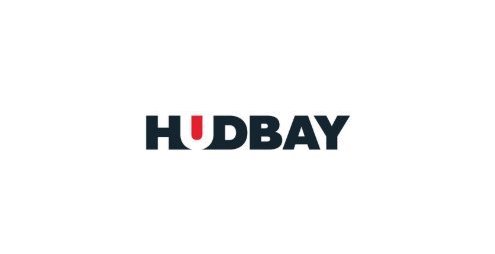Equity Investment Outlook | Fourth Quarter 2020
During the third quarter of 2020, the stock market continued its upward trajectory, gaining nearly 9% to bring year-to-date performance to +5.6% (as measured by the S&P 500). Many investors have been perplexed by what they see as a divergence between a strong stock market and a still rather weak economy. The answer to this dilemma rests on two pillars. First, in a period of sustained low interest rates, equity valuations tend to rise. Second, despite overall economic weakness, large parts of the economy are growing at accelerated rates. Companies benefiting from this rising demand and that already have very high margins and returns on capital are thereby enjoying sharply rising profits justifying higher than average multiples. As we discussed in last quarter’s Investment Outlook, the combination of low interest rates and rapid earnings growth leads to rising stock prices.
Thus, while some parts of the economy, such as travel and leisure, are suffering, other parts like e-commerce and internet usage are growing rapidly. The stocks of companies in the latter areas have done exceptionally well this year and in aggregate have driven the market higher. Not surprisingly, the stocks of companies in the more challenged sectors have languished.
In this quarter’s Outlook, we want to examine the growthier sectors of the economy. In managing portfolios during this time of stress, we have been laser-focused on the growth sectors of the economy (i.e., those sectors enjoying strong tailwinds) and have assiduously avoided sectors experiencing headwinds. This has been central to our performance.
Perhaps the most obvious tailwind in these days of Covid lockdown is the rapid acceleration of e-commerce. Since people started sheltering in place, they have generally been either unable or unwilling to visit traditional brick-and-mortar stores. Instead they order items online. This has multiple implications. First, brick-and-mortar retailing has become a graveyard, with some select exceptions. Bankruptcies of both boutique retailers and chains have proliferated unlike any time in our lifetimes. Second, e-commerce has driven the need for more and more package delivery, clearly benefitting parcel delivery companies. It has driven the need for more internet usage benefitting a diverse group of companies, including internet providers that own the “pipe” into homes, data centers through which internet communication flows, semiconductor companies which provide the computer chips to run the data centers, and warehouses through which physical goods have to flow. E-commerce is thus a strong tailwind enabling a broad range of companies to thrive and grow.
More broadly, the growth of the internet is expressed in the digital transformation of the economy. Companies need to adopt more efficient processes in order to remain competitive. Those that do prosper. Those that don’t wither. The digital transformation is a tailwind for many companies, including semiconductor manufacturers, data center operators, and numerous software companies, among others.
The digital transformation has also accelerated a growing trend towards a “winner-take-all” or “winner-take-most” economic structure in which dominant companies grow more dominant. This is a trend we identified several years ago and has led us to invest in leading, dominant companies in many different and quite disparate industries, while avoiding secondary and tertiary players. Today, pretty much every company in our portfolios is a top tier player.
While we generally have avoided companies facing headwinds from the pandemic, we did make select investments at the depths of the market selloff in great businesses that should fully recover once the pandemic is under control. Many of these companies already trade well above our purchase price, but they still face near-term uncertainty. We believe that given their dominant positions, they should compound for years to come as the economy reopens.
The next major tailwind is the growth in renewable energy (especially wind and solar). This is driven by the desire to limit carbon emissions and is characterized by a dramatic drop in the cost of wind and solar power, making renewable energy fully competitive with natural gas and cheaper than coal. The flipside of ever-cheaper wind and solar power has been a steady decline in the attractiveness of conventional oil and gas, an area we have avoided for several years.
Finally, we would point to the aging of the population as providing a strong tailwind for health care, including the need for new drugs and new modes of treatment. While issues surrounding reimbursement can pose a risk to health care investments, the need for more effective drugs and treatments is undeniable. We have a few investments in leading health care companies.
We hope this gives you a sense of the prevailing themes in our portfolios. Besides these, we are looking at two other areas for potential investment. The first is the growth in electric cars. We’ve been reluctant to invest in the current industry leader as it has been losing money and clearly needed massive new financing, but we do hope to uncover one or two companies making products essential to electric vehicles (no matter who manufactures them). Secondly, we believe artificial intelligence and other advanced technology will transform manufacturing in this country and around the world. We are examining several ways to play this trend.
In short, rather than obsessing over near-term issues related to the election or the economy as a whole, it is far more important today to focus on those sectors experiencing strong secular tailwinds – and by extension, growth – while avoiding sectors buffeted by headwinds.
Please let us know if you have questions or thoughts about any of these issues. We would be more than happy to discuss them at greater length. Meanwhile, stay healthy.
Sincerely,
John Osterweis Larry Cordisco
____________________
Past performance is no guarantee of future results. Index performance is not indicative of fund performance. To obtain fund performance call (866) 236-0050 or visit osterweis.com.
This commentary contains the current opinions of the author as of the date above, which are subject to change at any time. This commentary has been distributed for informational purposes only and is not a recommendation or offer of any particular security, strategy or investment product. Information contained herein has been obtained from sources believed to be reliable but is not guaranteed.
The S&P 500 Index is an unmanaged index that is widely regarded as the standard for measuring large-cap U.S. stock market performance. One cannot invest directly in an index.
Holdings and sector allocations may change at any time due to ongoing portfolio management. References to specific investments should not be construed as a recommendation to buy or sell the securities by the Osterweis Fund or Osterweis Capital Management.
Osterweis Capital Management is the adviser to the Osterweis Funds, which are distributed by Quasar Distributors, LLC. [OSTE- 20201014-0037]













